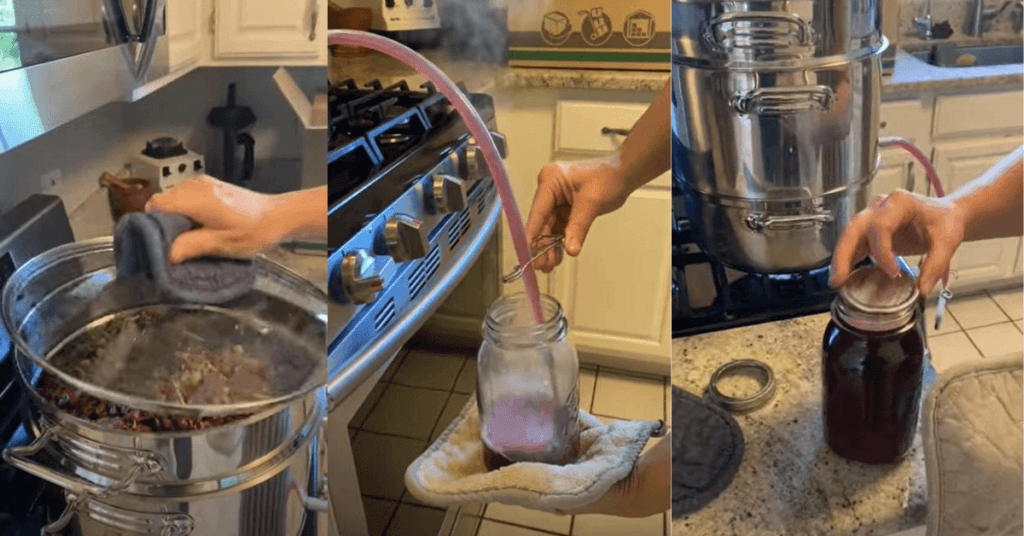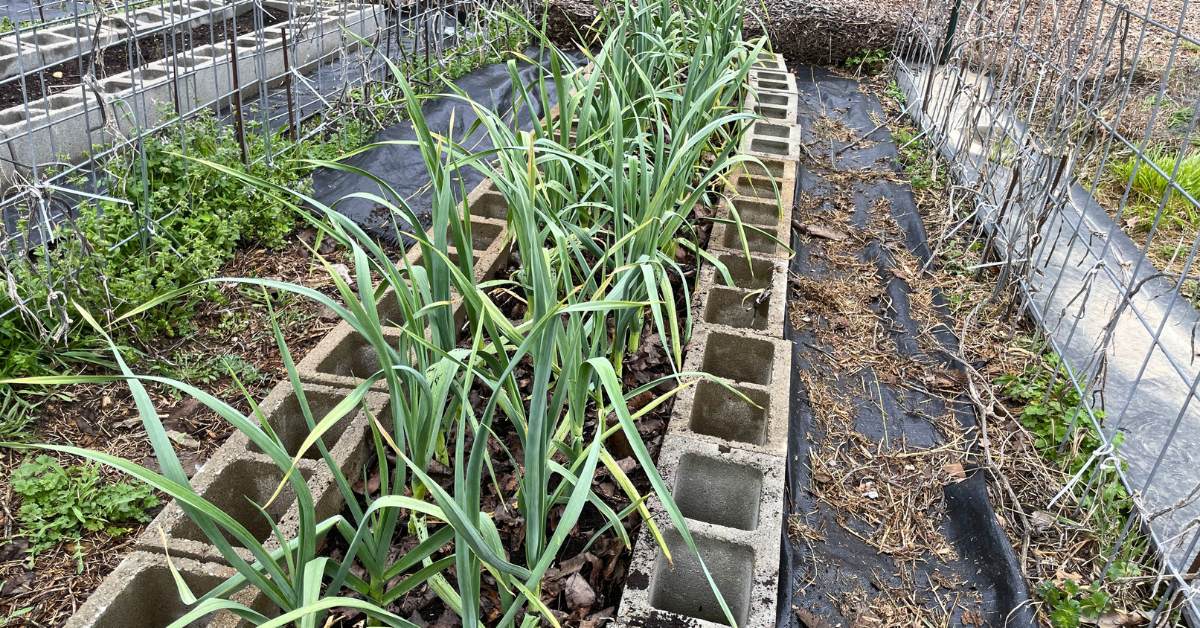If you live on or near a farm, you’re probably inundated with huge amounts of produce from time to time. Or maybe you just enjoy making (or at least eating) homemade jams and jellies.
Either way, you’ll want to learn about steam juicing.
Once I learned how to use a steam juicer, processing sizeable harvests and gifted boxes of grapes no longer seemed so overwhelming.
Steam juicing may sound intimidating, but it’s pretty straightforward as long as you heed a few fundamental warnings.
In this post we’ll share some basic instructions for steam juicing to get you started.
Benefits of Using a Steam Juicer
If you think preserving fruit juice means hours and hours of peeling and chopping and de-stoning fruit, you’re going to love juicing with steam.
You just clean your fruit and toss it in the basket to let the steam do its thing. No need to peel your apples, take the pits out of your peaches, or even remove grapes from the vine.
Simply wash the outside of the fruit, and you’re good to go.
Prices pulled from the Amazon Product Advertising API on:
Product prices and availability are accurate as of the date/time indicated and are subject to change. Any price and availability information displayed on [relevant Amazon Site(s), as applicable] at the time of purchase will apply to the purchase of this product.
Using this type of juicing device makes dealing with boxes and boxes of freshly picked fruit so much quicker. Also, there’s no squeezing or straining afterward since the pulp and seeds stay separated from the juice.
It’s much less work than traditional juicing and you end up with a beautiful, clear concentrated juice suitable for jams, jellies, sorbet, smoothies, and more.
Potential Disadvantages of a Steam Juicer
One drawback of steam juicing compared to traditional, mechanical juicing is the effect heat has on the enzymes and some of the nutrients in the resulting juice.
Mechanical juicing produces “live” juice – as in, the enzymes are still alive and kicking. With steam juicing, the same steam that effortlessly breaks down the cell walls of fruit also destroys the enzymes.
Don’t get me wrong … the juice is still very good for you, and the process remains a fabulous way to preserve harvests that might otherwise go to waste.
However, the juice produced may not meet your health goals if you’re looking for the best nutrient bang for your buck.
Steam juicing also involves hot (sometimes scalding) liquids and equipment, so it’s not something you should attempt with small children and pets under foot. Or if you’re a naturally clumsy person.
Mechanical juicing is much messier and more time-consuming than steam juicing, but there’s no chance of burning yourself.
To avoid accidents stemming from the use of high heat, be sure to warm your jars ahead of time in the oven to prevent glass breakage due to a temperature difference.
And consider keeping Junior and Fluffy out of the kitchen while you work.
How to Use a Steam Juicer for Grapes
Steam juicing is a perfect way to extract concentrated juice from grapes while leaving behind seeds and pulp. To picture how a steam juicer works, think of a regular basket steamer.
The water boils in the pot below, and the steam collected indirectly heats the produce in the steamer basket up top.
The difference between the steam juicer and a regular steamer pot is that the juicer collects runoff from the produce and delivers it in the form of concentrated juice.
It does this with a container (juice reservoir) positioned between the two levels (the water basin level and the steamer “basket” level) that catches the juice produced—and then dispenses it through a gravity-fed hose.
If you wish to make grape juice with a steam juicer, you begin the way you’d steam broccoli in a traditional vegetable steamer.
Fill the bottom pot partway with water and place your produce (in this case, grapes) in the basket on top, and replace the lid. But with the juicer, as the juice reservoir fills, you’ll dispense the juice into a jar using the attached hose.
Here’s a video tutorial that shows you how to steam juice grapes step-by-step:
You can make apple juice with a steam juicer the same way.
As a matter of fact, you can steam-juice just about any kind of fruit you desire, including tomatoes.
Tips for Steam Juicing Beginners
As I said, juicing with steam heat is a basic process that’s not much different than cooking dinner.
If you’re still nervous about trying it, these tips might help:
- Since the dispensing hose is gravity-fed, be sure to clamp it well when not dispensing. Position the hose as far into the narrow part of the clamp as possible. It may still drip, so put a cloth on the floor.
- Leave the lid on the pot as much as possible while steaming. The lid is crucial to keeping the steam level high enough to work its magic on the fruit.
- Keep an eye on the reservoir. If it overflows, you’ll lose precious juice as it flows down into the water basin. Also, the sugar in said juice could collect against the direct heat source and burn, damaging or even ruining your juicer.
- Even more importantly, keep an eye (or ear) on the water level in the basin. To create enough steam plus keep the basin from drying out and scorching, you need to make sure you maintain sufficient water. Some people add marbles to the basin and if they hear them rattling, they know it’s time to add more water.
- The leftover pulp in the basket can be used to make fruit leather and sauces.
- If you use sterilized jars and put the lids on immediately so that they seal, you can consider highly acidic fruits to be steam-canned and, therefore, shelf-stable. Just be sure they’re naturally acidic so that they’re safe to store without pressure canning.
- For more consistent results, process an entire batch of fruit all the way through, and bottle that juice before starting a new batch.
FAQS
How much water do you put in a steam juicer?
When juicing with steam heat, use enough water to sustain a rolling boil and produce plenty of steam. If your manufacturer doesn’t recommend a certain level, fill the basin to within a couple of inches of the rim to keep it from boiling over.
What fruits can be steam juiced?
Just about any fruit can be steam juiced. Some types of fruit will produce more juice than others, depending on the variety and ripeness of the fruit you choose.
Some possibilities are grapes, apples, plums, peaches, and just about any type of berry.
With berries, especially, be sure to remove any parts of the plant that may be toxic if consumed before placing the berries in the juicer basket.
Is it OK to use tap water in a steam juicer?
Unless the manufacturer specifically warns against it, tap water is A-OK to use in a steam juicer. As a matter of fact, tap water has more minerals than distilled water, which makes it more heat conductive, thus speeding up the boiling process.
There are no small mechanical parts that will clog over time from hard water deposits (as in a clothing steamer or steam mop), so tap water should work just fine.
If you groan inwardly when it’s time to harvest berries, stone fruit, grapes, etc. because of the messy and time-consuming work involved, using a steam juicer may be the alternative you’re looking for.
This process will allow you to churn through a large fruit harvest while leaving you enough time for all those other chores on your list. And maybe even enough time to take a juice break and enjoy the “fruits” of your labor (see what I did there?).
Happy steam juicing!










